Driven report from Sweden for Mercedes-Benz reveal of a concept ute
When Mercedes-Benz launches the X-Class in New Zealand in 2018 it has an important decision to make -- where to sell the world's first premium ute.
Two versions of the X-Class concept ute were revealed in Stockholm, Sweden, last week to journalists from the core markets of Argentina, Brazil, Europe, Russia, South Africa and Australasia.
The white Explorer and the yellow Adventurer concept utes show the direction Mercedes-Benz plans to go in the ever-increasing medium-sized pickup truck market.
The X-Class is a collaboration with Renault-Nissan.
The German brand made a decision six years ago to focus on a premium ute, but it was only signed off by head of Mercedes-Benz, Dr Dieter Zetsche, 18 months ago.
The X-Class aimed at the European and NZ markets will be built in Barcelona, Spain, at the Renault-Nissan plant.
Mercedes-Benz Van's model line-up for the X-Class will include a V6 petrol, four-cylinder petrol and diesel engines, manual and automatic transmissions plus two-wheel, four-wheel low-range and 4Matic. There are no plans at this stage to add an electric or hybrid version.
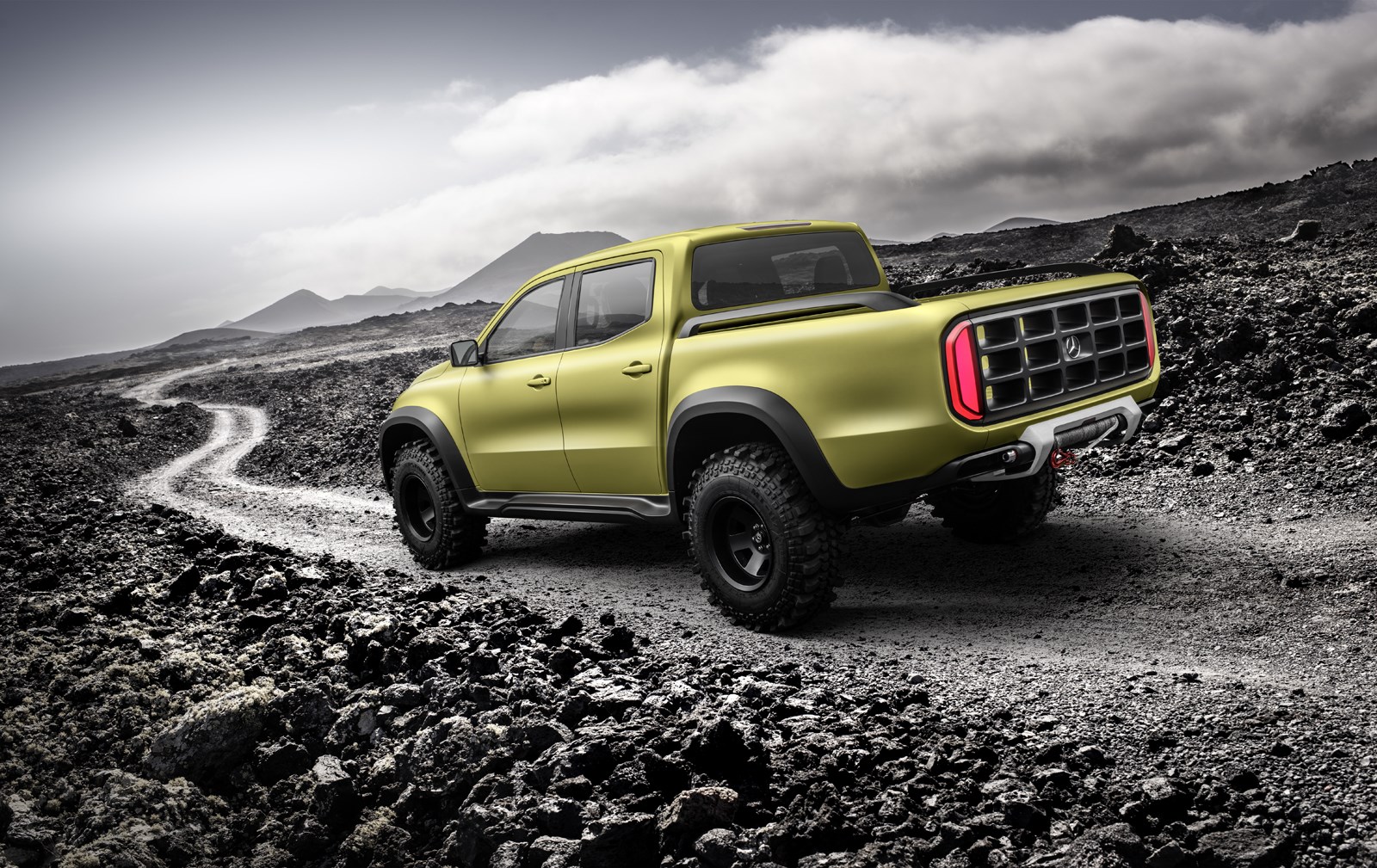
The X-Class has a ladder-type frame that will take a payload of more than 1100kg and has a towing capacity of up to 3500kg.
It will also have driver assistance systems based on cameras, radars and ultrasound sensors.
The ute will go into production next year before going to sale in New Zealand in 2018, although details on the price or specifications have yet to be announced, Mercedes will probably focus on a top-of-the-line model such as the V6 diesel with 4Matic.
Last year, utes made up 21 per cent of new vehicle sales in New Zealand, sitting just behind SUVs as the most popular picks for Kiwis, according to Motor Industry Association figures. The Ford Ranger was our top selling vehicle for 2015, and is still dominating new registrations.
The X-Class ute will be competing in the New Zealand market with high-spec models such as the Ranger Wildtrak, the Toyota Hilux SR5, Holden's Colorado Z71 and fellow European brand Volkswagen's Amarok.
It will also compete with the other vehicles created from the platform, Nissan's NP300 Navara and Renault's Alaskan.
The X-Class will ride on a wider track and have different suspension, chassis components and engines than the Navara.
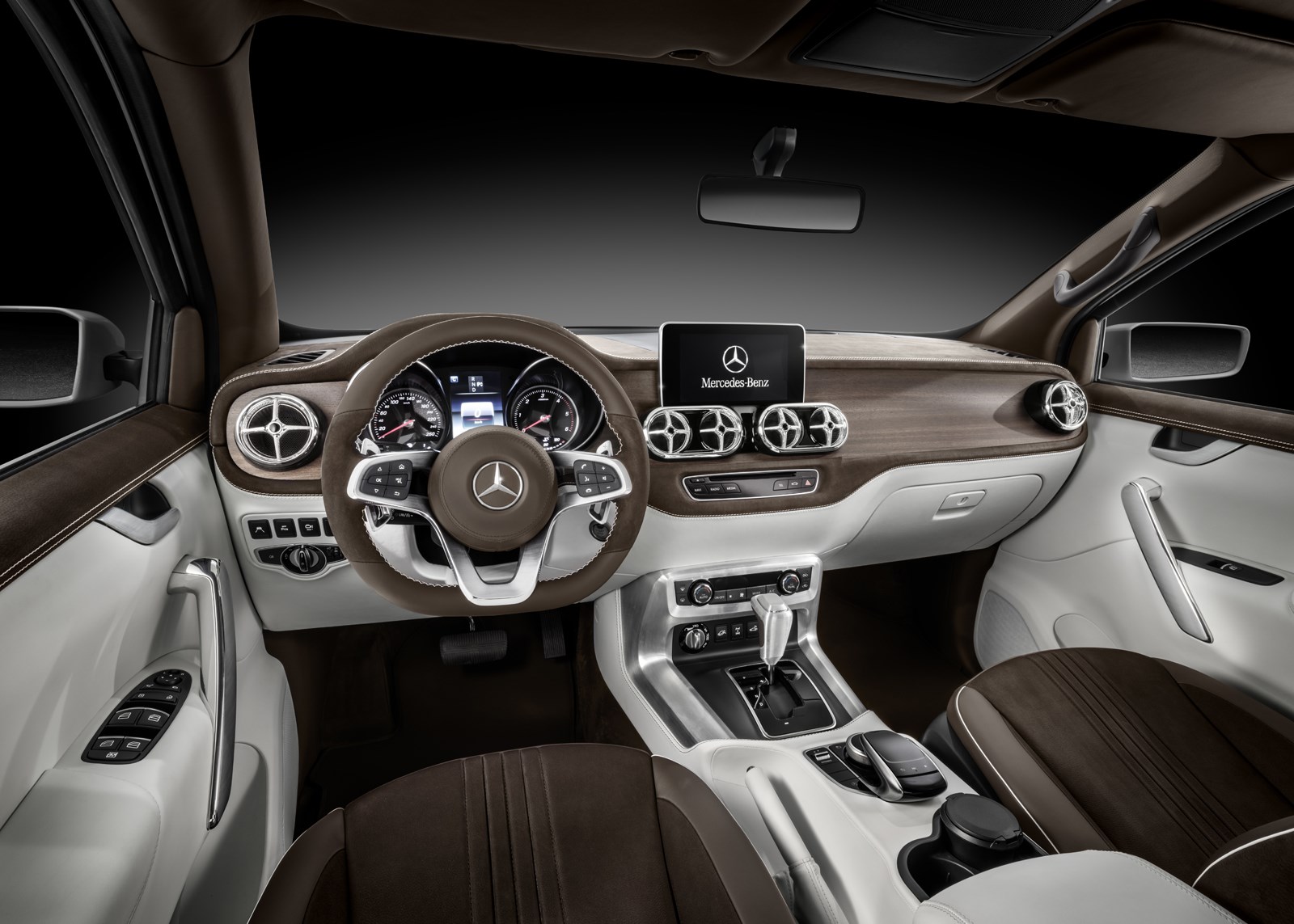
Diane Tarr, Mercedes-Benz Vans Australia and New Zealand managing director, told Driven at the Stockholm launch that the company was still considering where the X-Class would be sold, at commercial or passenger dealerships or a combination of both.
"We are considering both.
"It's one of those situations where it sits in the middle, in the sweet spot with the passenger car," she said.
"We are also understanding the customer -- it has a space in both, because we working on understanding what the representation should be for New Zealand."
She said the New Zealand dealers are "super-excited" about the arrival of the X-Class.
"They are very enthusiastic to understand what they need to do in preparation for bringing the ute into New Zealand."
She said dealers have to understand their facilities, and "the new processes and structures of introducing a greater volume product into the operations".
She agreed that there will be two strong markets in New Zealand for the X-Class.
"If you look at the saturation points and overlay with competitor sales ... they tend to be around those geographic regions of Auckland and Christchurch."
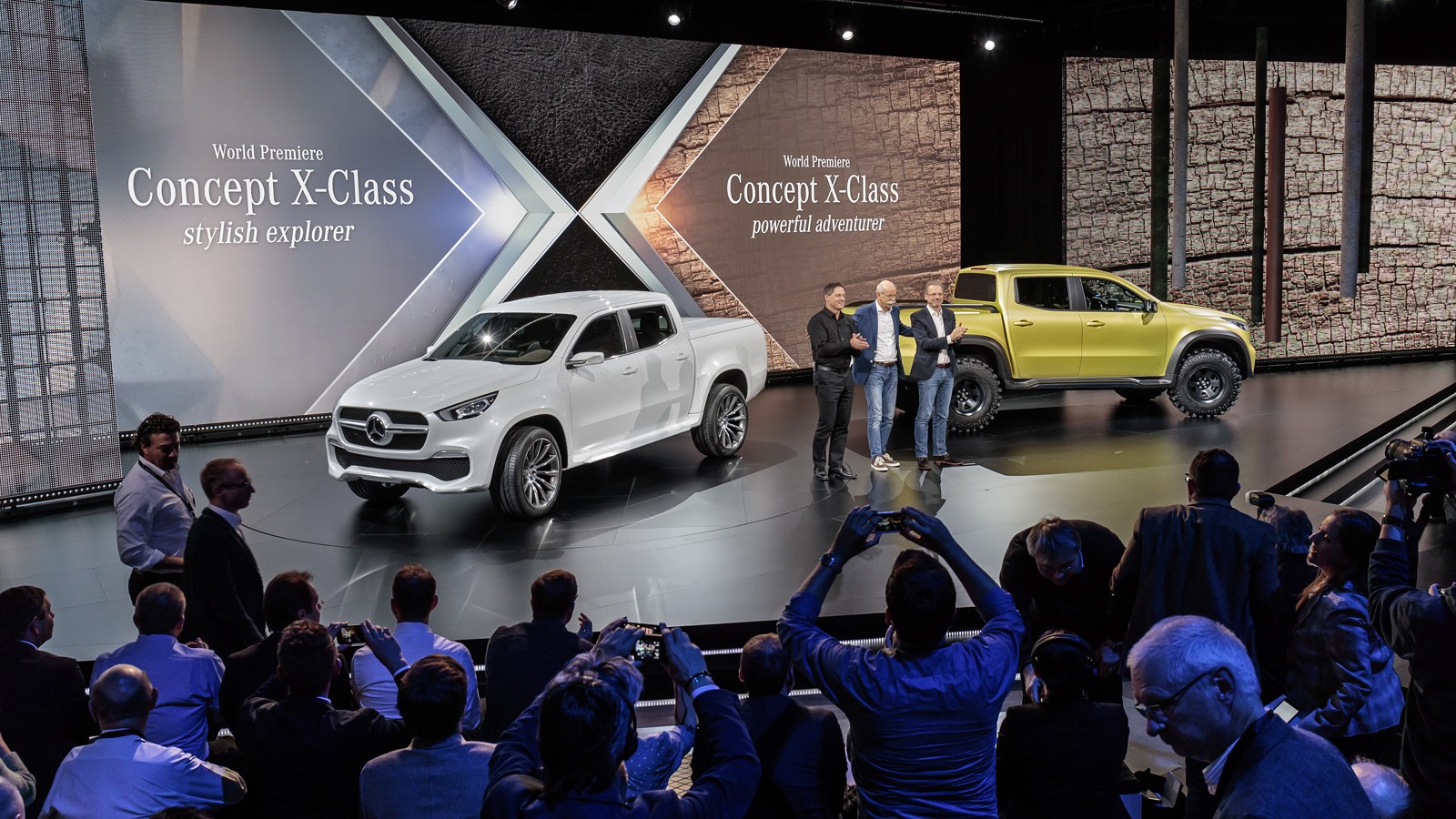
Tarr said she discusses with her German colleagues the two separate Downunder markets, rather than just "Australasia".
"I'm always particular with my colleagues that we always talk about Australia and New Zealand ...because of how Hilux and Ranger play a big part in the overall market. So for us it's an exciting opportunity for New Zealand and it is an important market," said Tarr.
"We know who our main competitors are, Volkswagen Amarok, the car-like Ranger and, of course, the Nissan Navara, and we are getting more information on the Renault Alaskan, so when we look at that we don't bundle everything together in Australasia, we are quite clear around creating separate identities in the New Zealand market because there are differences to some degree.
"It's important for us to get the specifics of the New Zeal and market and opportunities."
That also means calibrating the X-Class for New Zealand's winter conditions with plans to test the ute at Cromwell's Southern Hemisphere Proving Ground.
"We have stipulated that with our [German] colleagues and they understand some degree of proving and testing has to do done," Tarr told Driven.
Mercedes has identified five customer groups for the X-Class. One is families with an active lifestyle with key markets being Brazil, Argentina, Australia, New Zealand and South Africa.
Urbanites who like activities such as jet-skiing make up the second group, while independent individualists who use the pickup as an everyday vehicle in the city, are group three.
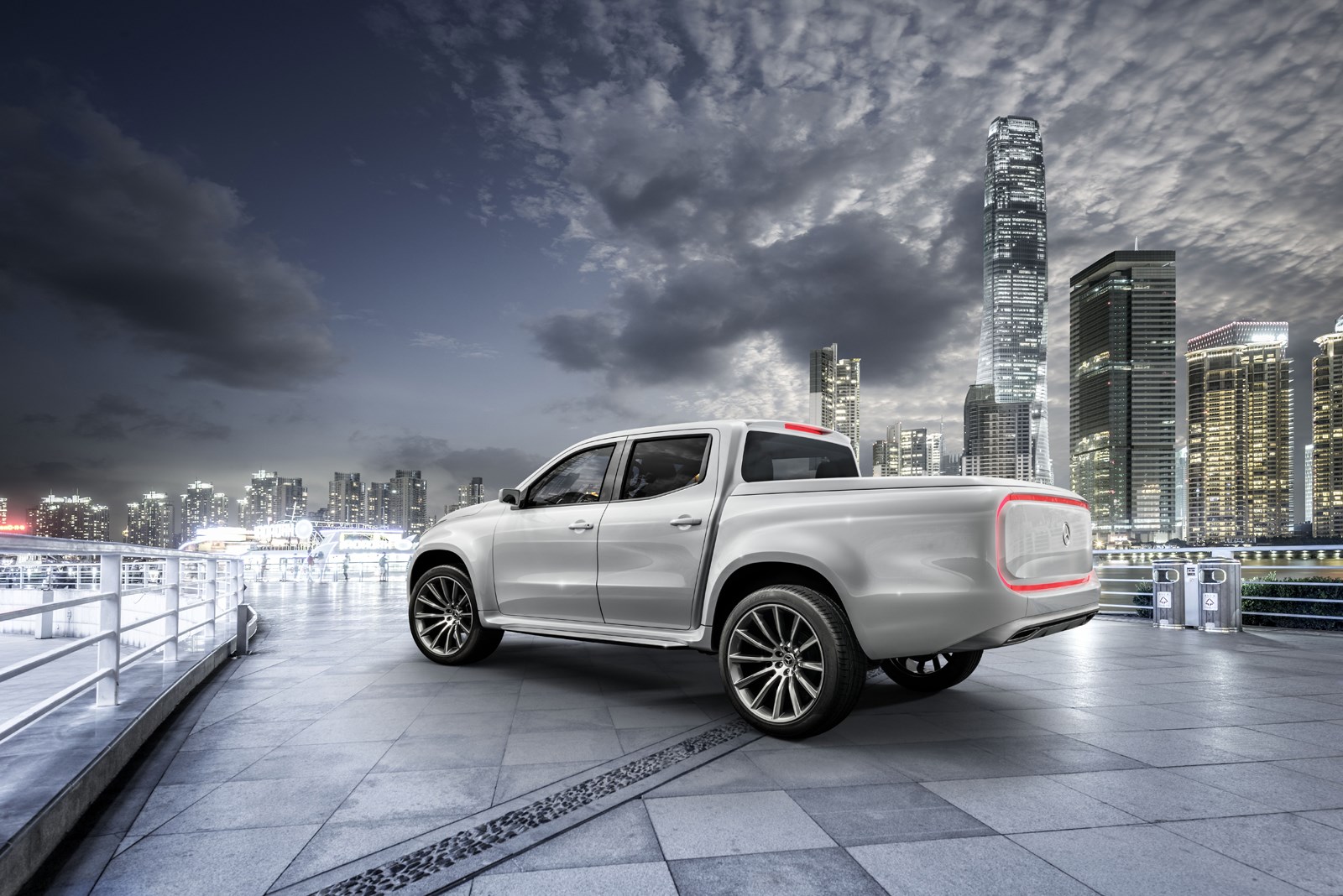
Contractors, builders and architects make up group four while cattle ranchers in Argentina, soybean farmers in Brazil or vintners in South Africa, who use their pickup for commercial and private purposes, are the last group.
Head of Mercedes-Benz Vans, Volker Mornhinweg, said, "We will appeal to new customers who have not considered owning a pickup before."
The brand will become "the first premium manufacturer to occupy the promising segment of mid-size pickups".
The percentage of privately used pickups has been growing internationally. There is a need for a five-person cab while more private buyers want the comfort of a passenger car.
Driven asked Mornhinweg at Stockholm why Mercedes-Benz isn't focusing on the North American market.
"We are aiming at a global launch... but the mid-size truck market in the United States is down."
Zetsche said Mercedes-Benz will be a "relevant player in this segment", referring to the world's first premium SUV, the Mercedes-Benz ML introduced 20 years ago, with that segment now the dominant player worldwide.
"We have a broad range of SUVs."
Driven asked Dr Zetsche about the predicted sales numbers for the X-Class, but the boss of Mercedes said policy was always that the company would not comment on numbers.
The five-seat dual-cab models are the lifestyle-focused Stylish Explorer in white and the more rugged looking Powerful Adventurer in Lemonax metallic.
The Explorer is an urban focused ute with the distinctive Mercedes three-point star in centre spot, a massive powerdome on the bonnet and headlamps extending far into the wings.
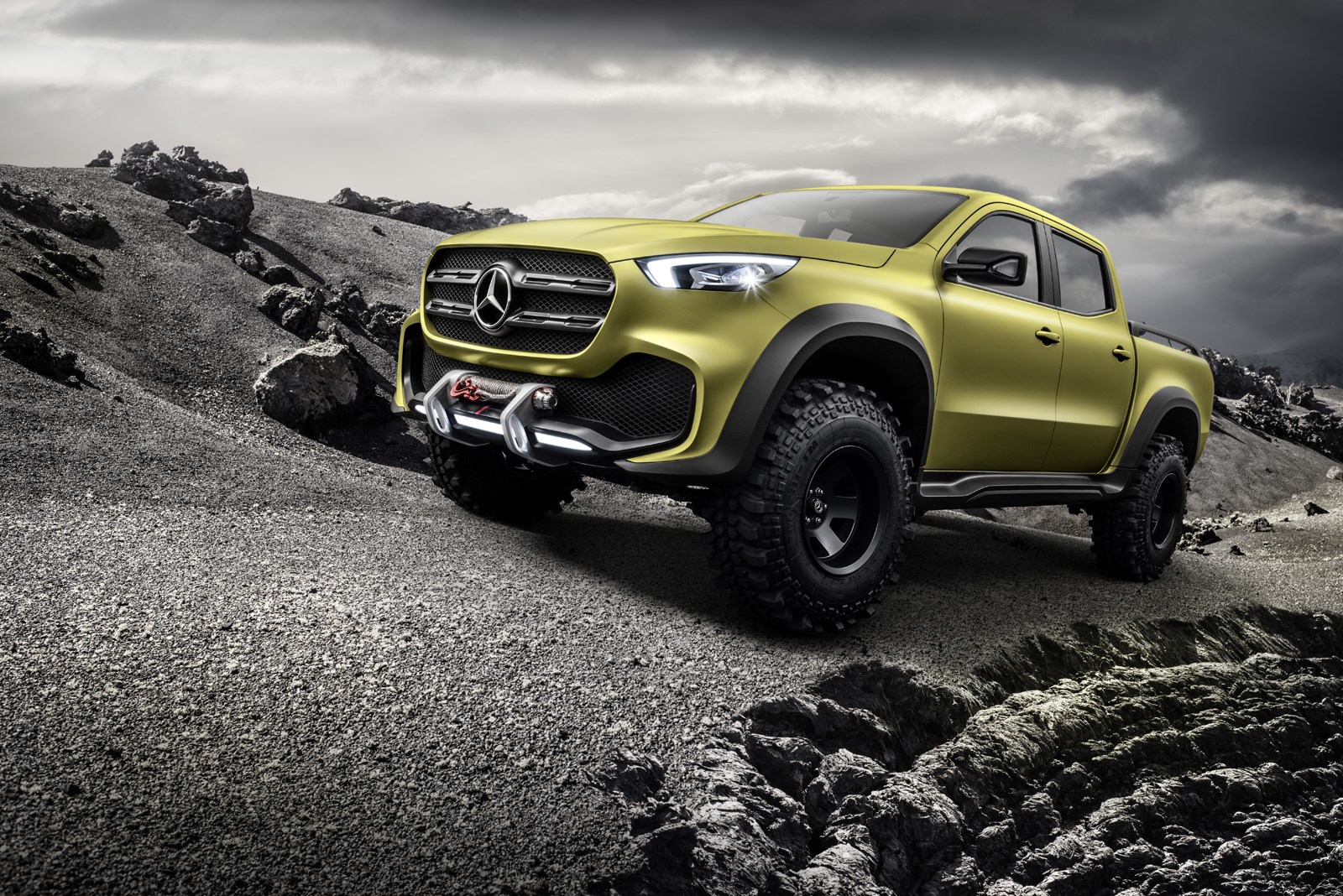
It has large flared wheel arches to emphasise the sense of width, and give the vehicle an even more solid stance on the road.
The Explorer sits on 22in alloys while the most dynamic part of the concept is the tail lights made up of a continuous LED light strip in a slim chrome surround on the tailgate.
Inside, the Explorer has more of a sedan feel, taking cues from the E-Class.
This concept model will appeal to the core Mercedes-Benz buyers and customers wanting the familiar appeal of the German brand.
The second concept model, the Adventurer, focuses on the classic traits of a pickup with a 1.9m-tall stance, flared arches and a wide track to enhance its chunky proportions.
The front end has the brand's two-louvre grille, seen in the brand's SUVs. There is an electric winch up front and a tow hook at the rear.
The rear has a mesh-style pattern on the tailgate that, while looking impressive, will probably get ditched pre-production as it's impractical.
The Adventurer's cabin is not as luxurious as the Explorer and has a more rugged appeal.
This concept ute is clearly aimed at the buyers of Wildtrak or people who will use it off-road.










